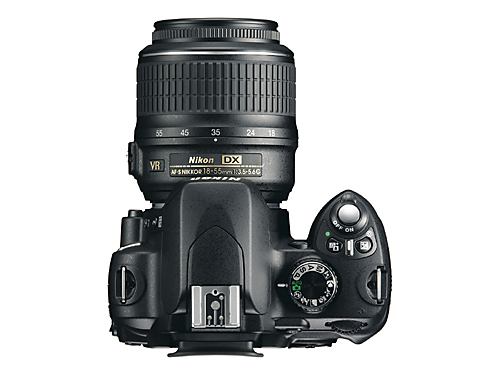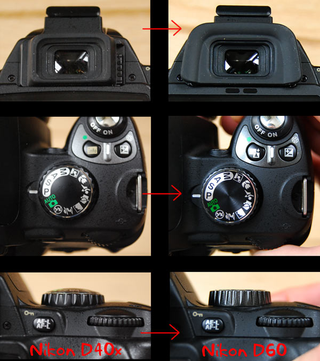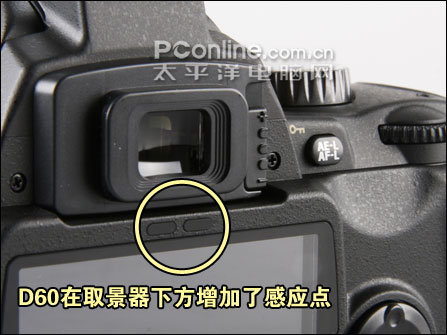
Importantly it also brings the EOS 60D in line with its main competitors, and it also allows you to judge the critical sharpness of your photos using the LCD screen, which has been a long-standing issue on Canon's entry- and mid-range DSLRs. The main LCD screen has been significantly improved, now offering a fantastic resolution with 1,040K dots, so you may find yourself using it more often than you thought. This can make the Canon EOS 60D quicker to use and it may also extend the battery life, depending on how extensively you use the LCD screen. On cheaper cameras, the LCD on the rear usually has to do both jobs, but on this model most of the key settings are visible from above on the smaller panel. There are two LCD displays on the EOS 60D, the 3-inch colour LCD on the rear and the smaller status panel on the top. While this makes it simpler to understand and easier to operate with the camera held up to your eye, it does inevitably lead to more scrolling through the menu system. On top of the Canon EOS 60D, positioned above the smaller and simplified status LCD display, are four buttons, each of which now has a single function rather than the dual-function buttons of the 50D. Similar to the system that Sony Alpha DSLRs have used for a while, the Quick Control screen is particularly well-suited to beginners and tripod work.

Depending on which shooting mode you're using, this lets you set various parameters via the LCD screen, using the four-way controller to move around the various options. On the 60D, there's now a dedicated Q button which does the same thing. On the 50D, pressing the joystick opened the new Quick Control screen.

The mode dial does feature a lock button which helps to prevent unintentional changes to your settings. Less understandable is the controller's design - sitting slightly proud of the circular dial that surrounds it and looking more like a wheel itself, it takes some time to get used to this less elegant arrangement. We grew to like the 50D's joystick, especially as higher-end Canon DSLRs also use it, but we can understand why Canon has implemented a more beginner-friendly four-way controller. The 50D's small joystick that was used for menu navigation has been replaced on the 60D by a more conventional four-way controller, better suited to upgraders from the more consumer-orientated 550D / Rebel T2i. It's a bit of an acquired taste compared to more conventional control dials, but you quickly get used to it and it is easy to spin. This rear quick control dial is characteristic of all high-end Canon EOS cameras. Like other semi-pro cameras, the Canon EOS 60D offers two control wheels a small one on the top of the handgrip, and a large, spinning dial on the back of the camera. This is fine for novices, but awkward for experienced photographers who want to be able to adjust a combination of exposure, shutter speed or aperture quickly. On more basic SLRs, adjustments are usually made using a combination of buttons and a single control wheel.

Owners of the 50D may bemoan the abandonment of a magnesium alloy body on the 60D, but we think that the new model is durable enough to survive day-to-day life, especially as Canon claim that the 60D is as weatherproof as its predecessor, and it crucially places less load on your shoulder during the course of a day's shooting. It's also a little lighter too at 755g (including the battery and memory card) thanks to the adoption of a metal chassis covered with a plastic outer, as also used by the EOS 550D / Rebel T2i.

There's a textured area on both the deep hand-grip and around the thumb-rest on the rear of the 60D, and unlike the smaller and cheaper EOS 550D / Rebel T2i model, this camera is well-suited for everyone with normal to large-sized hands. The 60D is almost halfway in size between those two models, and is therefore smaller than the 50D that it replaces, measuring 144.5 x 105.8 x 78.6mm. Instead it represents a new category of Canon DSLRs designed to precisely fill the gap between the consumer level EOS 550D / Rebel T2i and the semi-pro EOS 7D. The Canon EOS 60D is not simply a direct replacement for the 50D with a few extra features. Positioned above the EOS 550D / Rebel T2i and below the EOS 7D, the new Canon EOS 60D is available priced at £1099.99 / €1309.99 / $1,099.00 for the body only.
D60 liveview manual#
Successor to the two year old 50D, the EOS 60D offers a number of key highlights, including an 18 megapixel CMOS sensor, 3 inch vari-angle LCD screen, Full HD video capture with manual controls, 5.3 frames per second burst shooting, a 9-point all cross-type autofocus AF system, DIGIC 4 image processor, Canon's 63-zone iFCL metering system, support for SD / SDHC / SDXC cards and an ISO range of 100-12800. The Canon EOS 60D is a new prosumer DSLR camera.


 0 kommentar(er)
0 kommentar(er)
